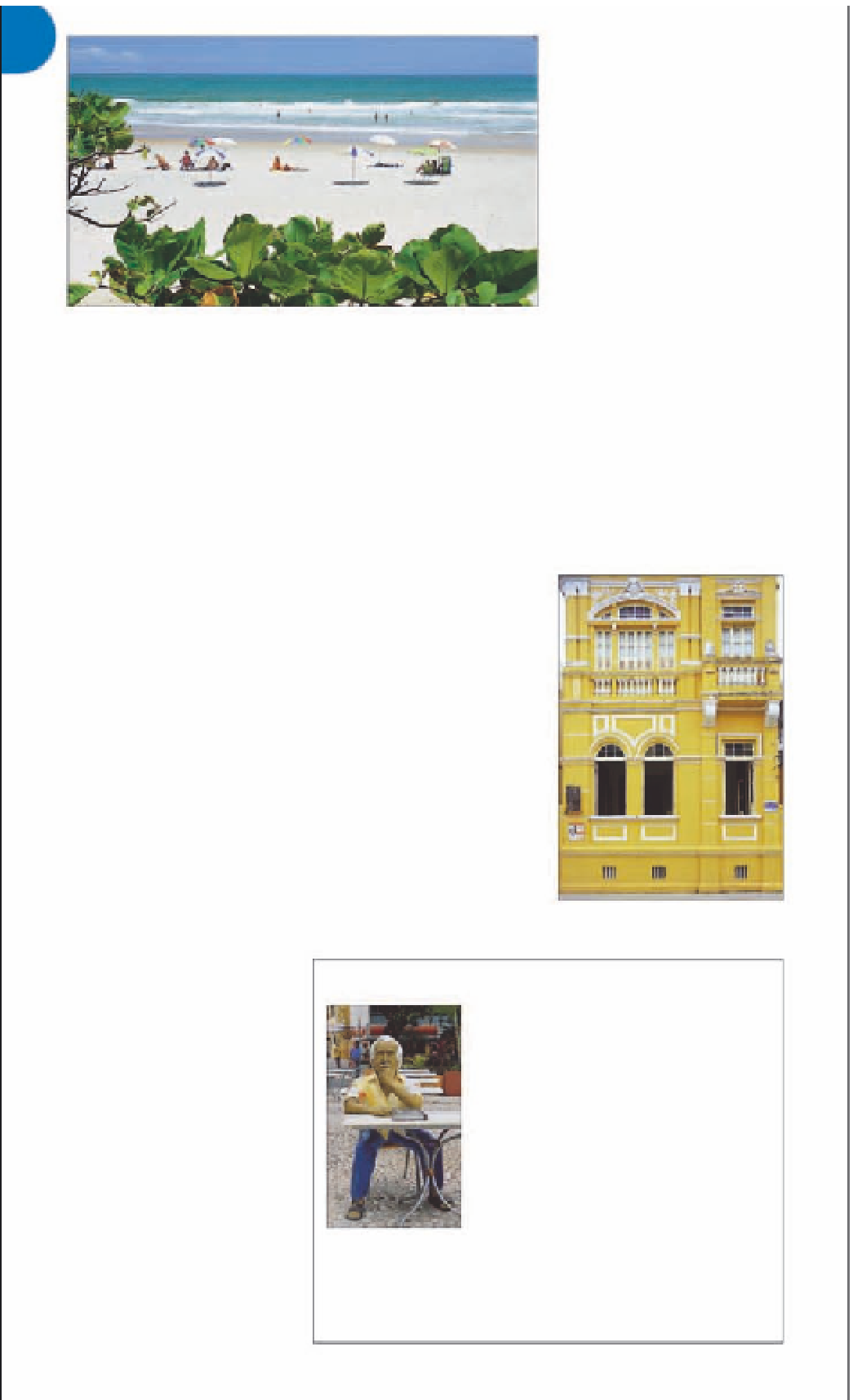Travel Reference
In-Depth Information
of his best topics,
Gabriela,
Clove and Cinnamon
, takes
place in the city's historic core
at the height of the 1920s
cocoa boom. Today, visitors
can stroll along the prome-
nades and see the famous Bar
Vesúvio and Bataclã Cabaret
that feature in his novel. The
author's childhood home has
been opened to visitors as the
Casa de Cultura Jorge Amado
.
Among the city's other sights
is the 16th-century
Igreja de
São Jorge
. There are several
fine beaches to the north and
south of town and
Cururupe
,
near the village of Olivença,
is a favorite.
E
Casa de Cultura
Jorge Amado
Rua Jorge Amado 21.
Tel
(073)
3634 8986.
#
9am-noon & 2-6pm
Mon-Fri, 9am-1pm Sat.
&
E
Igreja de São Jorge
Praça Rui Barbosa.
#
irregular hrs.
The beautiful and unspoiled Prainha beach in Itacaré
Itacaré
8
*
18,000.
~
Ilhéus.
@
n
Rua
João de Souza, Centro, (073) 3251
2329.
www
.itacare.com
drive follows the coastline and
allows access to a string of
beautiful, secluded beaches,
many of which have little or
no facilities.
The small fishing town
of Itacaré is part of Brazil's
famous Discovery Coast.
Portuguese explorer Pedro
Álvares Cabral
(see p48)
,
who was the first European
to officially “discover” Brazil,
landed in Porto Seguro,
close to Itacaré, in 1500.
Large areas of protected
Atlantic rainforest, which
were given World Heritage
status by UNESCO in 1999,
meet the sea along the coast
of Itacaré. Relatively isolated,
the town is favored by nature
lovers. Itacaré is also known
for its relaxed lifestyle and
typical Afro-Brazilian culture.
The beaches have enormous
waves, making it a popular
surfing destination. Most are
surrounded by lush forest and
can only be accessed on foot.
Prainha
, Itacaré's main attrac-
tion, is considered to be one
of Brazil's most beautiful
beaches, and is accessible
only by a trail through the
rainforest from Ribeira beach,
just south of town.
Ilhéus
9
*
221,000.
~
@
n
Setur, (073)
3634 6008.
When farmers began growing
cocoa trees imported from the
upper Amazon basin in the
early 20th century, Ilhéus, the
largest city on Bahia's southern
coast, established itself as a
major cocoa growing region.
A disaster of epic proportions
struck in 1989, when a para-
site infected most of the
plantations and destroyed the
entire crop. The industry has
yet to recover, but several of
the old plantations have been
converted into museums.
Ilhéus is best known as
the setting for several novels
by Bahia's most beloved
author, Jorge Amado. One
Casa de Cultura Jorge Amado,
childhood home of the famed author
JORGE AMADO (1912-2001)
The son of a cocoa plantation owner,
Jorge Amado was born near Ilhéus in
1912. In 1931, Amado moved to Rio to
study law, but his heart was already
given to literature. That very year, he
published his first novel,
O País do
Carnaval
. He based his 1958 novel,
Gabriela, Clove and Cinnamon
, on the
warring cocoa barons of his native
Ilhéus, but infused it with a sense of
humor that won him acclaim in Brazil
and around the world.
Dona Flor and
her Two Husbands
(1966),
Tieta do
Agreste
(1977), and
Gabriela, Clove and
Cinnamon
were later turned into
popular and successful films. Armado published 21 novels,
which were translated into 49 languages. He died in 2001.
Environs
Known as the
Estrada Parque
(the Park Drive), the road that
connects Itacaré to Ilhéus
traverses a well-preserved
strand of Atlantic rainforest.
Care has been taken not to
disrupt the ecosystem and to
protect animals crossing the
highway. In places, nets have
been strung from tree to tree
to provide safe passage for
monkeys crossing the road.
The scenic 49-mile (80-km)
Life-like statue of
Jorge Amado, Ilhéus
For hotels and restaurants in this region see pp376-8 and pp401-403





































